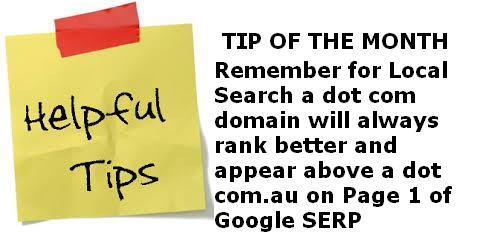What exactly is a Generic TLD (Top Level Domain) or gTLD?
Simply put, it’s the single ‘end part’ or suffix of a Domain Name.
For example, our website’s domain name is www.wollongongonline.com and the digits ‘.com’ are the most commonly used family of Generic Domain Names.
I expect everyone will recognise .com but there are in fact about a dozen or more currently in use, including the relatively common .biz, .org, .info and .net.
In our case we also control www.wollongongonline.com.au which is called a ccTLD, i.e. the second .au part of the .com.au refers to Australia.
But the big question on everyone’s lips at the moment is: Is spending $185,000 upfront and another $25,000 each year for your very own Generic TLD a worthwhile investment?
I guess it depends on who you are. For example, using a brand for a gTLD a sportswear company such as Nike could possibly consider using nike.nike instead of their current nike.com.
Trouble is, whilst it might look very sexy on your emails – and I’m thinking here sydneystore@nike for instance rather than current [email protected] or @nikestore.com.au, the fact is the .com version (i.e. with the highest Page Rank) will always rank higher on the critical Google SERPs.
What’s more, you will also have to closely consider Google’s latest announcements on their use of Trade Marks as keywords in Google AdWord campaigns in this country (and everywhere else in the world post 23 April 2013).
Google changes AdWord policy on Trade Marks
Imagine spending over $200K in your first year of acquiring your very own gTLD and your opposition places AdWords above your #1 spot in the organic listings using your brand as the PPC keywords.
Google says it won’t allow use of the brand in the visible text on the actual AdWords result and justifies its position as providing more quality content to a searcher. For a price of course.
Having just completed an SEO audit for a Sydney based fashion distributor I can tell you that their brand was being used by all and sundry in both the AdWord text AND titles. It’s an absolute disgrace.
Google wouldn’t let you, or me, attempt this type of stunt in a fit. Talk about the emperor’s invisible clothes. It sounds very much like the dreaded (choke) cloaking to me – read a definite no no ‘Black Hat’ 101.
I’m thinking Google, like the recently departed Iron Lady, will not be for changing soon. So how does this dramatic change of policy at the search giant affect the pending introduction of gTLDs I hear you say?
Well, I simply can’t see how you can now justify the expense of purchasing and maintaining a gTLD.
Let’s face it, other than for vanity purposes (and that might be enough) I can’t see any sound business reason why you would contemplate the purchase. You certainly won’t get better search results.
I’m sure most SEO consultants worth their salt would be happy to optimise your website for 10% of that figure and what’s more deliver a far better organic search result.
And of course you can always use the ‘Do no evil’ people if you want immediate results for only a fraction of that price.

EDITOR – Andrew M Connery: A pioneer in social media and active online since early 2001 heads up the Editorial team. Andrew is currently undertaking doctoral research at the School of Computer Science and Software Engineering at the University of Wollongong. A B2B marketing practitioner by profession his specialty area is local search and until July 2011 he was a Senior Trainer for the Federal Government’s Small Business Online program. His latest project is a joint venture with Barnett s Couriers to introduce 24/7 smart lockers for online purchases.
Comments
Powered by Facebook Comments

